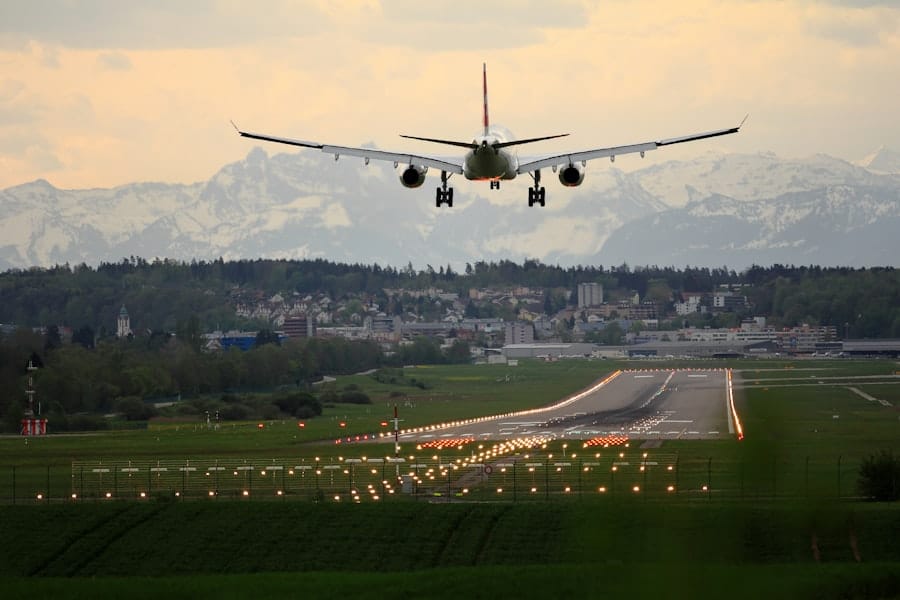The advent of autonomous spacecraft landing systems marks a significant milestone in the evolution of space exploration technology. These systems are designed to enable spacecraft to land on celestial bodies without human intervention, relying instead on advanced algorithms, sensors, and onboard computing power. The ability to autonomously land on planets, moons, or asteroids opens up new frontiers for scientific research and exploration, allowing for missions that would be too risky or complex for human pilots.
As space agencies and private companies alike push the boundaries of what is possible in space travel, the development of reliable and efficient autonomous landing systems has become a focal point of innovation. Autonomous landing systems utilize a combination of technologies, including radar, cameras, and LIDAR, to assess the landing environment in real-time.
The complexity of these tasks necessitates sophisticated algorithms capable of processing vast amounts of data quickly and accurately. As we delve deeper into the intricacies of autonomous spacecraft landing systems, it becomes evident that they are not merely a technological curiosity but a crucial component of future space missions.
Key Takeaways
- Autonomous spacecraft landing systems are crucial for the success of space missions, as they enable spacecraft to land safely without human intervention.
- Current challenges in autonomous spacecraft landing include navigating through unpredictable terrain, dealing with communication delays, and ensuring precise landing accuracy.
- AI plays a critical role in autonomous spacecraft landing systems by enabling real-time decision making, adaptive control, and the ability to learn from past landing experiences.
- Advancements in AI technology, such as machine learning and computer vision, have significantly improved the accuracy and reliability of spacecraft landing systems.
- The benefits of AI in autonomous spacecraft landing systems include increased mission success rates, reduced human error, and the ability to explore more challenging and distant planetary bodies.
Current Challenges in Autonomous Spacecraft Landing
Environmental Factors and Unpredictability
The variability of landing environments across different celestial bodies is a primary obstacle. For example, the Martian surface is characterized by dust storms, rocky terrain, and varying gravity, which can complicate landing maneuvers. Similarly, landing on the Moon presents its own set of challenges, including the presence of regolith that can obscure sensors and create unpredictable landing conditions. These environmental factors necessitate highly adaptable systems capable of responding to unforeseen circumstances during descent.
Precision Navigation and Control
Another significant challenge is the need for precise navigation and control during the final stages of landing. The descent phase is often fraught with risks, as spacecraft must transition from high-speed entry to a gentle touchdown. This requires not only accurate trajectory calculations but also real-time adjustments based on sensor feedback. Any delay or error in processing this information can lead to catastrophic outcomes.
Communication Delays and the Need for Autonomy
Furthermore, the communication delay between Earth and distant celestial bodies complicates remote piloting efforts, making autonomous systems essential for successful landings.
The Role of AI in Autonomous Spacecraft Landing Systems

Artificial intelligence (AI) plays a pivotal role in enhancing the capabilities of autonomous spacecraft landing systems. By leveraging machine learning algorithms and neural networks, AI can analyze vast datasets to improve decision-making processes during landing operations. For instance, AI can be trained on historical landing data from previous missions to identify patterns and predict potential hazards.
This predictive capability allows spacecraft to make informed decisions in real-time, significantly increasing the likelihood of a successful landing.
This continuous learning process is particularly valuable in environments where conditions may differ from previous experiences.
For example, if a spacecraft encounters unexpected terrain features or atmospheric conditions during its descent, AI algorithms can quickly adjust the landing approach to mitigate risks. This adaptability is crucial for missions targeting diverse celestial bodies with varying characteristics.
Advancements in AI Technology for Spacecraft Landing
Recent advancements in AI technology have significantly enhanced the performance and reliability of autonomous spacecraft landing systems. One notable development is the integration of deep learning techniques, which allow for more sophisticated image recognition and environmental analysis. By employing convolutional neural networks (CNNs), spacecraft can better interpret visual data from cameras and other sensors, enabling them to identify safe landing zones with greater accuracy.
This capability is particularly important when navigating complex terrains where traditional algorithms may struggle. Additionally, advancements in reinforcement learning have enabled AI systems to optimize their decision-making processes through trial and error. In this context, an AI-controlled spacecraft can simulate various landing scenarios and learn from both successful and unsuccessful attempts.
This iterative learning process helps refine algorithms that govern landing maneuvers, ultimately leading to improved performance in real-world applications. As these technologies continue to evolve, they promise to enhance the autonomy and reliability of spacecraft during critical landing phases.
Benefits of AI in Autonomous Spacecraft Landing Systems
The integration of AI into autonomous spacecraft landing systems offers numerous benefits that extend beyond mere operational efficiency. One significant advantage is the reduction in human error associated with manual piloting or oversight. By relying on AI-driven systems, space agencies can minimize the risks posed by human factors such as fatigue or misjudgment during critical phases of flight.
This increased reliability is particularly vital for missions involving high-stakes landings on distant celestial bodies. Furthermore, AI enhances mission flexibility by enabling rapid adjustments to landing strategies based on real-time data analysis. For example, if a spacecraft encounters unexpected weather patterns or surface anomalies during descent, AI can quickly recalibrate its approach to ensure a safe landing.
This adaptability not only improves mission success rates but also allows for more ambitious exploration objectives, such as targeting previously inaccessible regions of planets or moons.
Ethical and Safety Considerations in AI-controlled Spacecraft Landing

As with any technology that relies on artificial intelligence, ethical and safety considerations must be addressed when implementing autonomous spacecraft landing systems. One primary concern is the potential for algorithmic bias in decision-making processes. If AI systems are trained on datasets that do not adequately represent diverse landing environments or scenarios, they may make flawed decisions that could jeopardize missions.
Ensuring that training datasets are comprehensive and representative is crucial for mitigating this risk. Additionally, safety protocols must be established to govern the behavior of AI-controlled systems during critical operations. This includes implementing fail-safes that allow for human intervention if necessary or establishing clear guidelines for how AI should respond to unforeseen circumstances.
The balance between autonomy and oversight is delicate; while AI can enhance efficiency and decision-making speed, it is essential to maintain a level of human control to ensure safety and accountability.
Future Applications of AI in Space Exploration
The future applications of AI in space exploration extend far beyond autonomous landing systems. As technology continues to advance, we can anticipate a range of innovative uses for AI across various aspects of space missions. For instance, AI could play a crucial role in autonomous navigation during interplanetary travel, allowing spacecraft to chart optimal courses while avoiding obstacles such as asteroids or debris fields.
Moreover, AI-driven robotics could revolutionize surface operations on celestial bodies by enabling autonomous rovers or drones to conduct scientific research without direct human oversight. These robotic systems could analyze soil samples, monitor environmental conditions, or even construct habitats for future human explorers—all while adapting their strategies based on real-time data analysis. The potential for AI to enhance both robotic and human missions in space is vast and continues to inspire new ideas and innovations within the field.
The Potential of AI in Advancing Autonomous Spacecraft Landing Systems
The integration of artificial intelligence into autonomous spacecraft landing systems represents a transformative leap forward in space exploration technology. By addressing current challenges through advanced algorithms and machine learning techniques, AI enhances the reliability and adaptability of these systems during critical landing phases. As we continue to explore the cosmos, the potential applications of AI will undoubtedly expand, paving the way for more ambitious missions and deeper understanding of our universe.
The journey toward fully autonomous spacecraft landings is not without its challenges; however, the benefits offered by AI—ranging from increased safety to enhanced mission flexibility—underscore its importance in shaping the future of space exploration. As we stand on the brink of a new era in space travel, it is clear that AI will play an integral role in unlocking the mysteries of distant worlds and advancing our capabilities beyond Earth’s atmosphere.
In a recent article discussing the future of AI in autonomous spacecraft landing systems, it is fascinating to consider the potential impact of non-fungible tokens (NFTs) on the space industry. NFTs have been gaining popularity in various sectors, including art and digital collectibles. This article on

